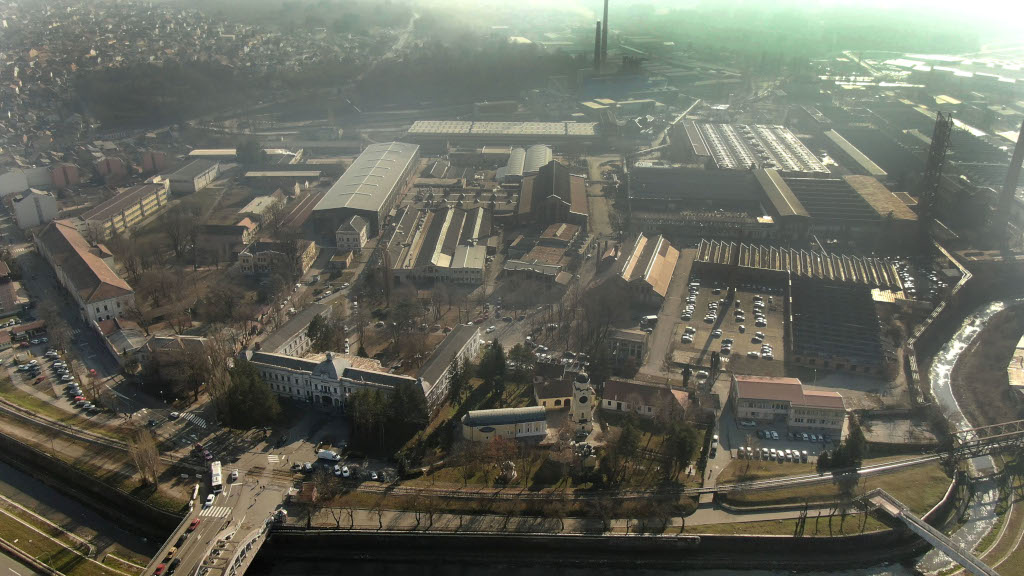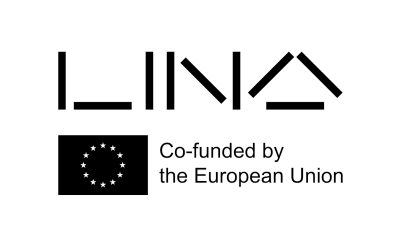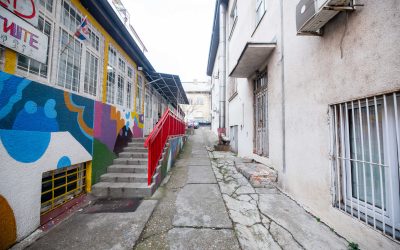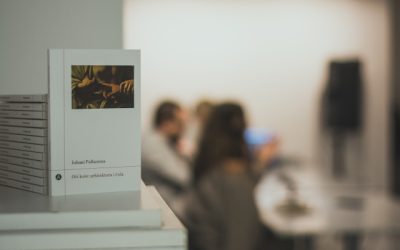Arsenal Placemaking:
Kragujevac
28 June 2024
Curators/Organizers: Jelena Brajković, Lazar Mandić, Natalija Bogdanović
Serbian Chamber of Engineers – Regional Center Kragujevac (IKS), BINA, University of Belgrade – Faculty of Architecture, University of Kragujevac – FILUM – Department for Interior Architecture, Urbanium – Kragujevac
The Arsenal Placemaking program relies on the previously conducted International Architectural and Urban Competition for the Restoration and Rehabilitation of the Spatial Cultural-Historical Complex of the MTI (Military Technical Institute – Arsenal) in Kragujevac (2022), program formats of the Good Urban Life project implemented in the period 2020-2023, the workshops held in 2023 as part of the “Green Cities of Serbia” project (July and December 2023) which related to the renovation and rehabilitation of the Arsenal complex in Kragujevac, as well as students’ visions for the Arsenal area presented in the designs made within the FILUM study programs.
Arsenal Placemaking represents the fifth consecutive annual edition of the Good Urban Life program, which entered its fifth year of realization in 2024. The Good Urban Life formats vary each year depending on the thematic focus, as well as the location of the program implementation. Good Urban Life (GUL) was launched in 2020 (curated by Jelena Brajković (SRB) and David Calas (AT)) and has included different actors, cities, ideas, approaches, as well as results. The original concept emerged in the European academic and research environment (COST framework, RESTORE CA16114), and over time, it has grown into interactive and practical formats that involve participation of different urban stakeholders, in order to encourage a more inclusive understanding of urban environment issues. This is also the reason why the format, after the initial phase of theoretical inquiry, transformed into variety of discursive approaches with different thematic focus and practical implementations that call for collective actions. Over time, the Good Urban Life formats have evolved in various ways, always dealing with public spaces and their quality.
The first GUL was held in Vienna within the COST Action RESTORE framework, as the WG5 Scale Jumping Training School which focused on setting holistic visions for the development of Brigittaplatz/Hannovermarkt in Vienna. In 2021, the GUL focused on the networking of urban actors from the colorful milieu of Belgrade’s urban life, and within the framework of a student workshop, holistic approaches to the urban renewal of the two selected locations in Belgrade were discussed. In 2022, Good Urban Life has transformed into urban actions and various interactive formats at multiple locations in Belgrade. The programme included five important topics related to the urban realm: HEALTH (health preservation), CARE (care for environment and people), URBAN FOOD PRODUCTION/CONSUMPTION (food demand), PLAY (playful interaction), and DIGITALITY (digital augmentation and application). These pressing topics were addressed by involving the public through different forms of action, performances and workshops in the selected spaces. Last year, Good Urban Life moved from Belgrade to Kragujevac, with the main aim to discuss urban life in smaller-size cities, as well as to decentralize BINA, which has been implementing a part of its program activities with institutions, associations and actors outside of the Belgrade area, who operate in the field of architecture and urbanism, education and culture in general. In 2023, the GUL continued to develop concepts of interactions in public space, which in the context of Kragujevac, dealt with ephemeral spatial practices. From 2018 to 2023, in Kragujevac, through actions by various actors, important collaborations took place and significant projects were implemented, such as various temporary spatial-art installations in public space, so the focus of the GUL, in 2023, was on the temporary features of space and change, considering possibilities and effects of ephemeral spatial practices.
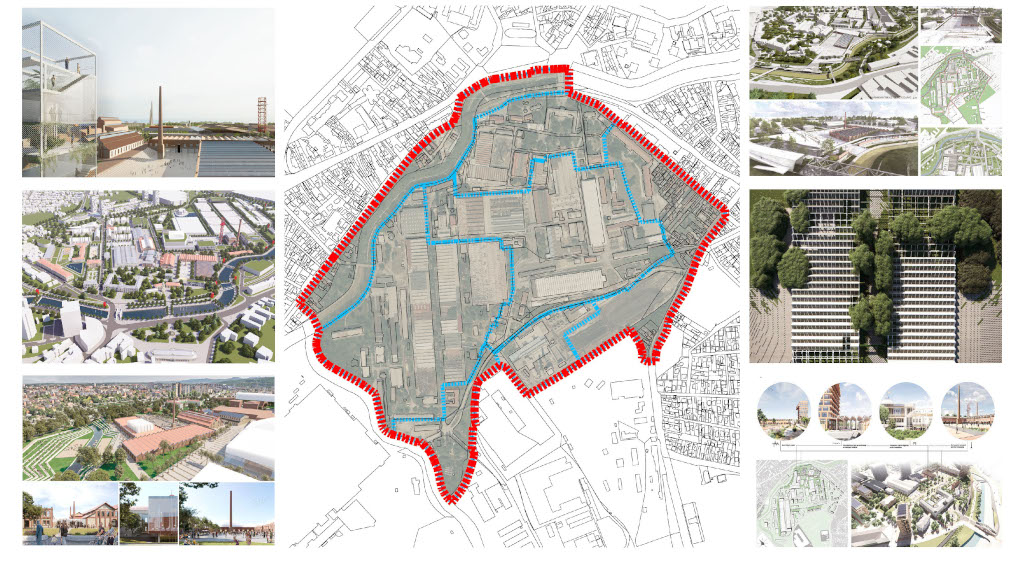
During the implementation of the 2023 programme, it was determined that Good Urban Life would focus on Arsenal as a case study in 2024. The Good Urban Life program will help in many ways to understand the urban needs and interactions of the area of Arsenal. The Arsenal Placemaking panel and workshop will form the vocabulary of Good Urban Life specific to Arsenal as a case study, and once again the GUL will test the concepts of placemaking and its relevance to urban environments.
The Arsenal Placemaking Panel and Urban Workshop expand the possible approach to the cultural, social and artistic aspects of the design of urban spaces, articulated through a defined urban-architectural narrative and a holistic approach established within the concept of Good Urban Life, adapted to the context of Kragujevac and the Šumadija region – the city atmosphere and features that support the quality of life in the city, the quality of public areas and the design factors that affect the health and well-being of residents, the specificity of the Šumadija landscape – Serbian Tuscany, the food production and gastronomy of the region, mobility in the city, the possibility of developing affordable housing for young people and the development of a progressive business climate for business incubators – IT sector, startups and co-working spaces.
The Arsenal Complex and the military industry developed in this area has been the agent of technical-technological, social and demographic development of the city since mid-XIX century. Today, the context of the MTI space (Military-Technical Institute Complex – Arsenal) is significantly different. It is characterized by stagnation, unsafety, poor lighting, non-functionality, ecological endangerment, heterogeneous ownership structure and inadequate use of the structures that represent the cultural heritage. After the City of Kragujevac bought a part of the space and buildings of the former MTI in 2006, some of the MTI finally became available to the general public and began to reveal all its contents and gems of industrial heritage.
The Complex has an exceptional ambient and artistic value. The exquisite physical and functional structure of the complex represents a typical “industrial landscape”, with an abundance of micro-ambiences alternating with “industrial architecture” built according to different models (German, French and Belgian), modern industrial buildings of utilitarian character, squares, courtyards, plateaus, manipulative spaces, streets … The picturesqueness of the ambience is complemented by the color of red brick, wooden decks, pent (shed) roofs … Tall chimneys with the surrounding buildings form a harmonious whole, and at the same time they are dominant accent motifs, benchmarks and symbols of the urban landscape of Kragujevac.
In addition to content from the domain of culture (galleries, concert halls, exhibition spaces, art workshops, film centers, art hubs,…), education (faculty programs offices and facilities), management and administration, etc., it is possible to organize various tourist content, as well as businesses, services, promotions of old crafts, entertainment events (festivals), sports and recreation, catering, etc., but also to develop specific forms of housing (within the complex) in line with the accommodation needs (business housing, student campus, art colonies, business hubs) etc.
The initiatives launched in the last 15 years speak of the importance of the location and the growing interest of both the local population and the City of Kragujevac, the Republic of Serbia, as well as other stakeholders interested in using the complex. One of the most important of these initiatives has been that of the University of Kragujevac for the conversion of certain facilities into university (FILUM) museum space, cultural and tourist attractions, and accommodation for a number of public institutions. Although the most important task is to establish state and local policy instruments, one should note the initiatives and attempts by public institutions, experts, citizens’ associations, students, potential investors, etc., to offer their visions of rehabilitation, repurposing and appropriation of the space and facilities of the Arsenal area.
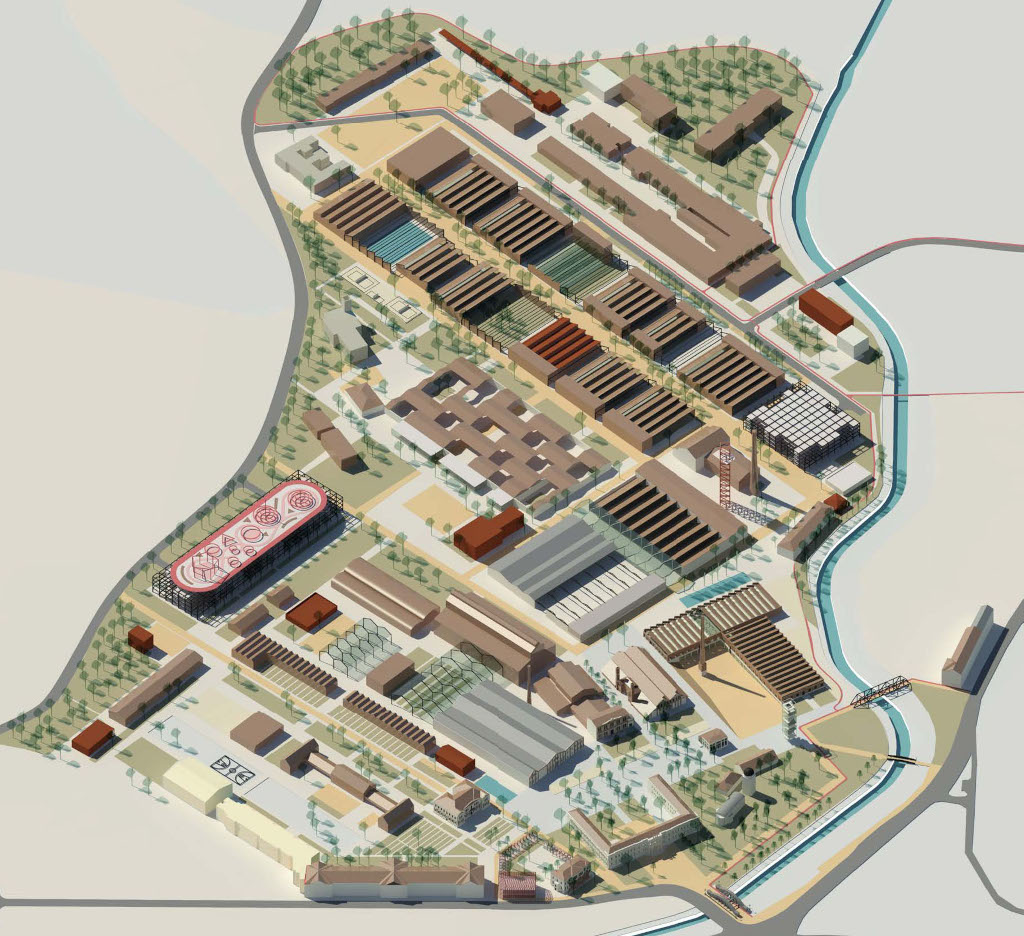
Common to the most of the proposals for renewal of the area is the vision which could be formulated as “Kragujevac, the capital of industry/industrial heritage” or “Kragujevac, the center of creative industries”. This comprises the “core” of the entire development strategy.
Within the G2G (“government to government”) phase of the “Green Cities of Serbia” project (organized by the Government of the Kingdom of the Netherlands), urban renewal and regeneration of the MTI complex was considered as the focus topic in one of the phases of the project. Mr. Thomas Aussems, an expert with exceptional practical experience in the operational management of industrial heritage complex rehabilitation projects in the Netherlands (Strijp-s, Philips industrial area in Eindhoven – similar in capacity, purpose and urban context to Arsenal in Kragujevac), was engaged for expert support.
The transformation of the MTI complex in a way that adds metropolitan atmosphere to its character, has been recognized as the most desirable strategic option for the area’s spatial development. This metropolitan atmosphere implies a mixed-use area, with high density and “24/7” activity. This would make the city much more attractive for new economic activities and urban-oriented target groups. Also, this strategic option can stop the departure of young people from the city. If the city is able to organize enough affordable housing for young people, this opens up an opportunity to attract young people from outside Kragujevac, especially if all the conditions for strengthening the “start-up” business climate are met. This strategic choice can also make a significant contribution to the new positioning and branding of the city. From the branding perspective, it is an advantage that the area is no longer called “MTI complex” but “Arsenal”, which refers both to the first industrial activity and to the famous music festival taking place in the area. The festival is actually the starting point for reactivation of the “Arsenal” concept, in accordance, of course, with the chosen vision for the future of this area.
The panel and the workshop are intended for architects, urban and spatial planners, other engineers, cultural, artistic and professional public, as well as everybody else interested in the further development of the Arsenal area. Within the panel and the workshop, a presentation of new approaches and methods in planning and design of similar industrial and historical heritage sites is planned: urban placemaking, modern trends in the revitalization and management of cultural and historical heritage urban sites, biophilic design, climate-sensitive urban design, ecological and green design of public spaces – bio-architecture and neo-nature, art in public space, branding and recognition.
The main aim of the Arsenal Placemaking Urban Workshop involves: sharing visions, ideas, projects and plans for said area – communication of the development, implementation, branding and management concepts for the Arsenal space, presentation of contemporary examples of relevant practices, as well as actualization of and direction for further development of the area.
The goal of the workshop is to facilitate an organized exchange of opinions, views and approaches by various stakeholders relevant to the development of Arsenal, one of the key urban points of Kragujevac. The main contributions of the workshop are ranking of important issues for the future development of the location, creation of a unique dictionary of urban development – the Arsenal Vocabulary, and setting the direction and pace for the urban renewal efforts in the space.
Participants: Dr. Jelena Brajković, University of Belgrade – Faculty of Architecture; Lazar Mandić, Serbian Chamber of Engineers – Regional Center Kragujevac (IKS), JP Urbanizam-Kragujevac; Natalija Bogdanović, University of Kragujevac – Faculty of Philology and Arts – FILUM; Prof. dr. Jelena Ivanović Vojvodić, BINA; Ivan Radulović, Chief Urban Planner of the City of Kragujevac; Prof. Dr. Aleksandra Đukić, UB-AF; Dr. Veroljub Trifunović, Association of Urban Planners of Serbia; Thomas Aussems (NL), Urban Regeneration Development Expert; Nevena Balalić, Marina Ilić, Katarina Petrović, Aleksandra Đorđević, First Prize Winners at the Urban-architectural Competition for Urban Renewal and Rehabilitation of Spatial Cultural and Historical Unit “Military Technical Institute in Kragujevac”; Marica Mijailović, Former President of The Serbian Chamber of Engineers, Kraljevo Land Development Public Agency; Zoran Jaglić, Regional Institute for the Protection of Cultural Heritage Kragujevac; Evica Rajić, ECOlogica URBO.

